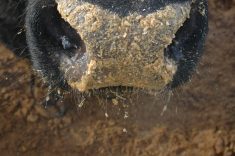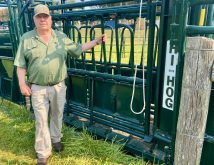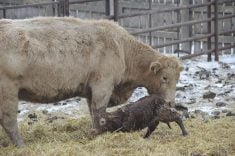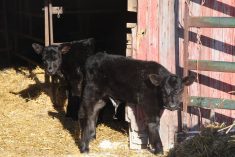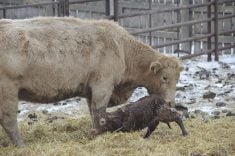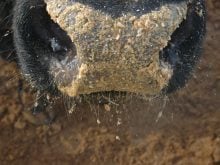Feedlot horses’ attitude, energy and disposition send important messages to cattle and make handling them much easier
A confident horse is key to establishing cattle trust, health and performance in a feedlot, says a veterinarian.
Dr. Tom Noffsinger is part of Production Animal Consultation, a veterinary group that checks about 2.5 million feedlot cattle per month in the midwestern United States.
“If you think about a triangle and the top of a triangle is cattle confidence, cattle performance and cattle health, the two legs of the triangle that support that are horsemanship and stockmanship,” says Noffsinger.
“What we continue to learn is that feedlot horses are really important in that their attitude, their energy and their disposition send important messages to cattle.”
Read Also

Crop quality looks good this year across Prairies
Crop quality looks real good this year, with the exception of durum.
A good feedlot horse should be quiet and able to imitate the foot cadence of cattle.
“His most important skill is to be able to stop gently and step back quietly without throwing his head up, so being able to walk straight and being able to back up on command with little or no emotion to doing that,” says Noffsinger.
Corey Conan, manager of Shelter Valley Land and Cattle near Lethbridge, says a feedlot horse also must be confident while working in confined spaces and conditions.
“It’s pretty intimidating when 200 or 300 animals come running up behind them, wanting to smell them. That’s a lot to take on,” says Conan.
Noffsinger says a horse’s skills must complement stockmanship goals for low-stress movement and handling, and that means “knowing that if a horse is perfectly parallel, he’s telling the animal to stop. And when the steer or cow stops, the horse should stop also and reward the stop.
“The horse should be willing to stand quietly until the cow’s mind changes and it’s ready to step forward again.”
Distance, position, angle and speed also come into play in horse-bovine communication.
“If we want to go with a single animal or a herd of animals, our most effective release of pressure is just a slight increase in the distance between the horse and the animal. So rather than walking parallel, you can turn the horse slightly away as a release of pressure. You could move the horse’s hip into the animal. You could change that horse’s angle,” he says.
“I think it’s really an exciting journey to be able to read the horse, read the cattle and actually release our pressure through distance, angle or speed the minute we get the response that we want.”
Cattle will sense the confidence, or lack of it, within the horse and will alter their movements accordingly, says Noffsinger.
Conan echoes that thought.
“The rider has to have the confidence to be able to manoeuvre through all those animals and still be able to look at the conditions of the cattle and not have to worry about whether his horse is going to act up to the environment that they’re working in.
“A more adjusted horse that’s confident and relaxed, then the rider can spend all his time looking for those animals with symptoms because the horse is underneath him doing the job as required.”
Conan says cattle are only as smart as the people who handle them, so noting their preferred movements is key.
He believes cattle like horses and are more comfortable when a well-trained horse is around.
“A horse that’s relaxed will have a lot of fun. A horse with high anxiety, their stress level feeds into the cattle and sometimes that stress level, a high head or a swishing tail, will disturb the cattle to where they’re restless and don’t want to relax and show the symptoms that you might be looking for to find that sick animal or injured animal in the pen.”
Noffsinger says producers should give cattle the chance to evaluate horse and rider before they actually enter a pen.
“When you go in that gate, it’s so much fun to just stop and let the cattle come to you. Your dream is to draw these cattle, so you get a really good handle on draw pressure.
“Even if cattle have never seen a horse, you can acclimate them. They will acclimate much more quickly to a horse than somebody on foot or in a four wheeler machine.”
There is a relationship between effective stockmanship and efficient horsemanship, Noffsinger says.
The rhythm and attitude of the horse is a critical signal.
“It’s really a work of art to have this horse so quiet, so confident and so responsive. That’s contagious. It spreads to the cattle. It’s just an absolute necessity for effective stockmanship.”






